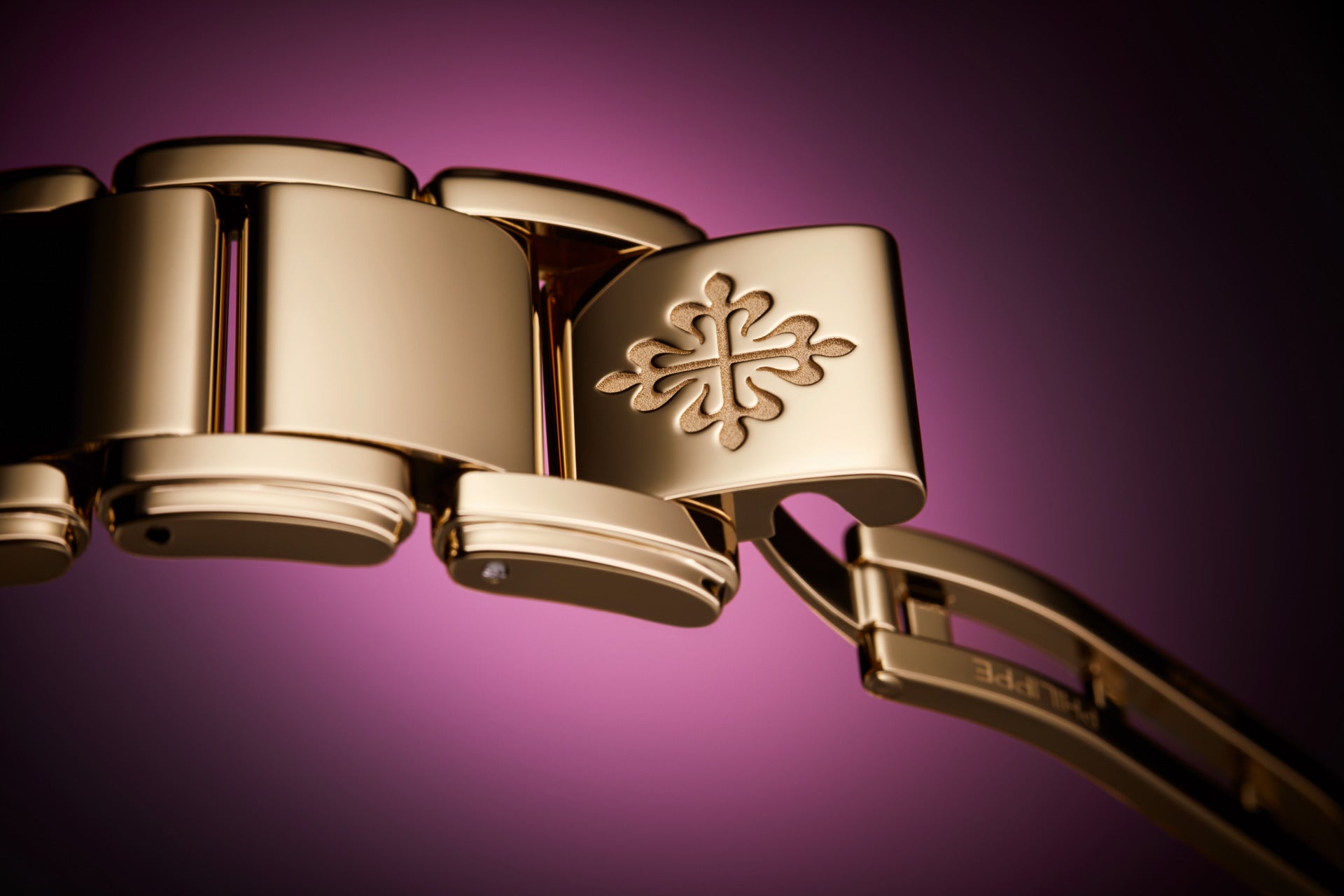Discreet enough to go almost unnoticed, yet an essential element that characterises every wristwatch: the clasp is an integral part of the watch strap and, in addition to its aesthetic and stylistic importance, is crucial in terms of wearability.
The strap can be made of various materials and the watch has different links in the case of a metal bracelet. As far as the clasp is concerned, there are only a few standard types: the most popular and best-loved are the folding clasp and the buckle.

Louis Cartier: the déployante clasp and its fortunate history
The bouclé déployante, or folding clasp, owes its fortune to Louis Cartier who patented it in 1910. Cartier was a fine jewellery and watchmaker with a talent for masterfully combining art and technique, aesthetics and practicality, thanks to his tireless creative drive and unique savoir-faire.
The bouclé déployante is a folding clasp or buckle characterised by a system of sheet-metal elements and hinges which, activated by a pressure-operated mechanism, fold in on themselves, securing of the watch strap. To remove the watch from your wrist, simply activate the pressure-operated mechanism that opens the folding clasp to comfortably expand it and slip the watch off.
There are several reasons for the popularity of the folding clasp, first and foremost its versatility: today, it is used by manufacturers for watches with both metal bracelets and leather straps. Moreover, the ergonomic design of the folding clasp evenly distributes pressure on the wrist, providing greater comfort when wearing the watch.
This type of clasp ensures that the timepiece remains firmly attached to the wrist and, thanks to its convenient opening and closing mechanism, facilitates the action of putting the watch on and taking it off. Practicality goes hand in hand with an important aesthetic note: the folding clasp adds a touch of sophistication and elegance to the overall design of the watch thanks to its discreet presence which helps to enhance the design.

The most advanced folding clasps can now also perform additional tasks, as in the case of Tudor's Pelagos sports model with its special “T-fit” safety clasp, which not only allows adjustment of the width, but also contains an extension for use over a wetsuit when diving.
The folding clasp: the different types
The folding closure system is divided into two main types , known as "folding" and "butterfly".

As the name suggests, the “retractable” folding clasp literally disappears into the bracelet of the watch. Think of the folding clasp on the Rolex Day-Date: the invisible clasp (Crownclasp) is released by the iconic Rolex crown on the President bracelet, the only clue that reveals how to release and lock the pressure-operated mechanism. A masterpiece of elegance and practicality, since 1956.

In the “butterfly” folding clasp, the opening and closing mechanism is activated by a discreet button on the side which activates two metal foils which open or fold back on themselves like a pair of wings. A perfect example of this type of folding clasp can be found in Overseas by Vacheron Constantin, a jewel of haute horlogerie which speaks a sporty language while retaining a unique level of elegance.

In the iconic Panthère by Cartier , however, the two types merge in a bracelet which, without logos or side buttons, fascinates with the extreme cleanliness of its lines.
Deployant and bu
In the iconic Panthère by Cartier, on the other hand, the two types merge in a bracelet which, with no logos and no side buttons, charms with the extreme simplicity of its lines.
Folding clasp and buckle together: the unison of practicality and elegance
The buckle is a great classic: on one end of the strap we find the buckle and the pin, a small rod or metal lever. The other end of the strap, which features a sequence of holes, is inserted through the buckle, which is secured by inserting the pin into one of the holes in the strap.
Unquestionably linked to watches with classic-style leather straps, today it can also be widely appreciated in sports bracelets or those made of innovative materials.

One clasp, however, does not necessarily exclude the other. One of the most fascinating aspects of haute horlogerie is, in fact, the skilled ability to combine different mechanisms and functions in the name of both practicality and aesthetics: this is how a buckle and folding clasp can coexist harmoniously in the same watch.
Some masterpieces by Patek Philippe, for example, feature both closure systems: in this case, the pin secures the folding clasp to the leather strap and the iconic Calatrava cross buckle, the symbol of the brand, celebrates the union between the elegance of the classic style and the sophisticated practicality of a folding clasp.

